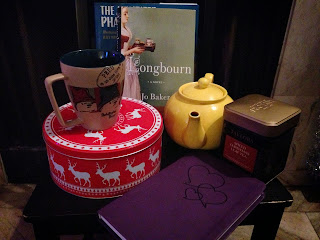Posts
Showing posts from 2013
Olugbemisola Rhuday-Perkovich: After Community, Some Solitude
- Get link
- X
- Other Apps
Posted by
Holly Schindler
ON BEING MY OWN COMMUNITY (HOLLY SCHINDLER)
- Get link
- X
- Other Apps
Posted by
Dia Calhoun
Smack Dab in the Classroom: The Gift of an Author Visit, by Dia Calhoun
- Get link
- X
- Other Apps
Posted by
Laurie Calkhoven
Writing Groups by Laurie Calkhoven
- Get link
- X
- Other Apps

Posted by
Sheila O'Connor
WHAT THE HEART KNOWS: A Conversation with Joyce Sidman
- Get link
- X
- Other Apps
Posted by
cmills
Writing Group Rules by Claudia Mills (December theme)
- Get link
- X
- Other Apps
Posted by
Sarah Dooley
December Theme: For Joy (Sarah Dooley)
- Get link
- X
- Other Apps

Posted by
Annie
My First Critique Group by Ann Haywood Leal
- Get link
- X
- Other Apps
Posted by
Bob Krech
Writing about a Community (December Theme) by Bob Krech
- Get link
- X
- Other Apps

Posted by
Tamera Will Wissinger
Writing Community in a Debut Year – December Theme by Tamera Will Wissinger
- Get link
- X
- Other Apps
